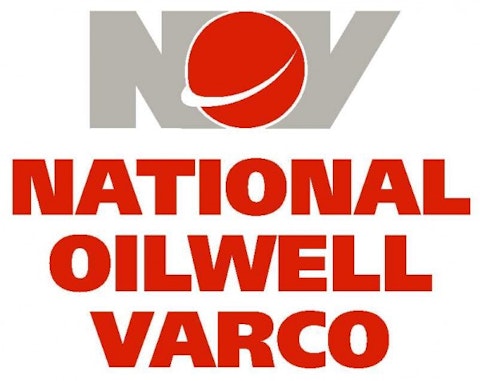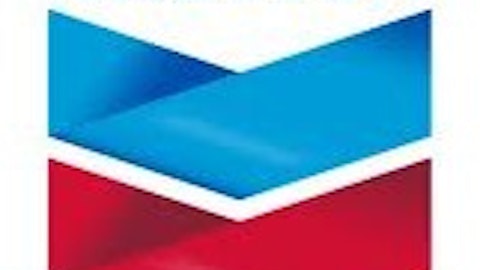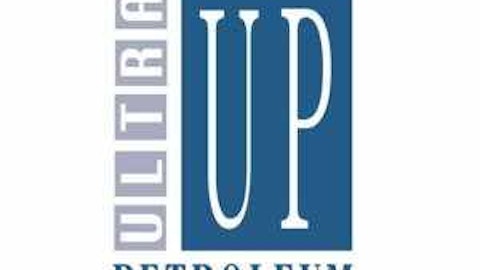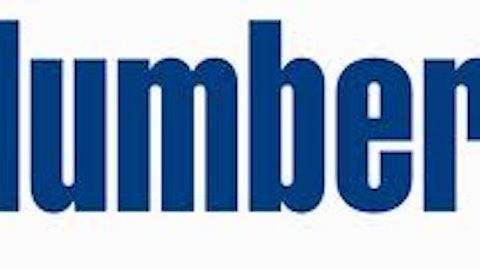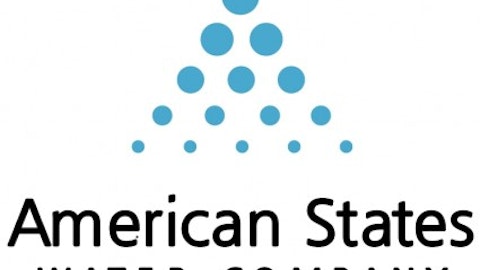I don’t own any stocks which are related to energy. The big oil companies are so big that growth is slow and valuations are often higher than I’d like to pay. They’re fine dividend stocks, but not exactly value stocks. On the other hand, small oil and gas exploration companies are often far too speculative for me to take seriously. But I realized recently that instead of looking at the companies that actually produce the oil and gas I should instead look at the companies which supply the equipment to do so.
It’s kind of like the PC market, where actual manufacturers of PCs saw their margins dry up as competition grew intense while companies like Intel Corporation (NASDAQ:INTC) and Microsoft Corporation (NASDAQ:MSFT) made a killing. In the energy business, National-Oilwell Varco, Inc. (NYSE:NOV) fills that role.
No other vendor
National-Oilwell Varco, Inc. (NYSE:NOV), both the company’s stock symbol and an acronym for its nickname “no other vendor”, maintains a dominant share in the global rig market. I won’t pretend that I know all that much about the details of oil rigs and their operation, but NOV sells just about everything involved.
NOV has increased it’s annual revenue by a factor of 10 since 2003, largely through an aggressive strategy of acquisitions. From 2008 through the first quarter of 2013 the company spent $9.6 billion in acquisitions, and during that time annual revenue increased from $13.4 billion to $20 billion. National-Oilwell Varco, Inc. (NYSE:NOV) acquires companies in order to expand its product line into new areas and regions, increasingly becoming a one-stop-shop for customers. In the first quarter of 2013 NOV completed a $2.5 billion acquisition of Robbins and Myer’s, the largest single acquisition in four years.
Where’s the debt?
It would be reasonable to assume that a company like National-Oilwell Varco, Inc. (NYSE:NOV) which spends so much on acquisitions would rack up an enormous amount of debt. Reasonable, but incorrect. Until the Robbins and Myer’s deal NOV had very little debt, and the most recent figure puts the total debt at $4.35 billion. The company has $2.84 billion in cash and investments, leaving $1.51 billion in net debt. Previous to the end of 2012 the company actually had a net cash position, but its latest acquisition required National-Oilwell Varco, Inc. (NYSE:NOV) to take on more debt.
The acquisitions of the past five years have been funded by the company’s strong cash flow. The average annual free cash flow over the past five years is $1.35 billion, although the 2012 number is negatively skewed by big changes in working capital. This means that the entire net debt position could nearly be eliminated in a with a single year’s free cash flow.
A look at profitability
The financial crisis caused a drop in revenue and a steep drop in earnings in 2009 as the total rig count fell amidst the recession. Both have recovered, though, with revenue growing by 36% in 2012 and EPS growing by 24%. For valuation purposes I like to look at owner earnings, which is a modification of the free cash flow which eliminates the items which have nothing to do with operational profit. Here are the owner earnings for the past five years:
| Year | Owner Earnings (billions USD) | Owner Earnings/Share |
|---|---|---|
| 2012 | $2.59 | $6.07 |
| 2011 | $2.10 | $4.95 |
| 2010 | $2.04 | $4.87 |
| 2009 | $1.80 | $4.32 |
| 2008 | $2.06 | $5.16 |
Even during the recession National-Oilwell Varco, Inc. (NYSE:NOV) made plenty of profit, and since then owner earnings have surpassed pre-recession highs.
How much is NOV worth?
With $3.53 per share in net debt and $6.07 per share in 2012 owner earnings the company currently trades at an adjusted P/OE ratio of about 12.2. Let’s lay out three growth scenarios and see how much NOV is worth in each one:
Slow growth – Owner earnings per share grow by 6% annually for the next 10 years and by 3% annually after that.
Fast growth – Owner earnings per share grow by 9% annually for the next 10 years and by 3% annually after that.
Faster growth – Owner earnings per share grow by 12% annually for the next 10 years and by 3% annually after that.
